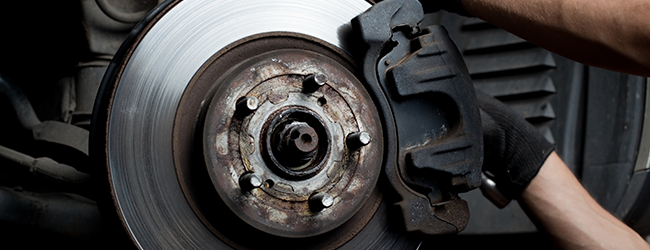How to Select a Brake Lubricant
So, you need to lubricate your brakes. You may have some questions. We have the answers.

Why Do Your Brakes Need Specialty Grease?
General purpose automotive lubricants cannot withstand the temperature requirements of braking applications and are not compatible with most braking materials. At elevated temperatures these lubricants will burn or oxidize, adding debris to the braking components which accelerates wear and creates additional noise, vibration, and harshness. Specialty lubricants also last longer than general purpose lubricants which extends the time between service intervals.
What Components Should You Lubricate?
Parking brake cables, brake caliper pins, electronic power brake and brake calipers, and anti-lock braking system bearings and pistons all operate at high-temperatures and should be lubricated using a specialty grease.
What Should I Consider When Selecting A Specialty Brake Grease?
1. Consider Material Compatibility Issues
While it may be common knowledge that petroleum lubricants are not compatible with rubber and plastic brake components, there are several other lubricant chemistries that are not ideal for braking applications.
PAO and Ester lubricants are not compatible with braking components as they are known to attack plastics and EPDM’s. Silicone, PFPE, or polyglycol lubricants are compatible with most plastic and EPDMs. With so many different chemical variations in plastic, it is always recommended that you test a grease for material compatibility. (Can’t test yourself? Nye has a long-list of in-house testing capabilities we can help with!)

2. Ensure the Grease Falls Within Your Operating Temperature
It's no secret that brakes get hot, but not every lubricant can take the heat. Low temperature conditions must also be considered when selecting a lubricant. The wrong grease will thicken and slow down the operation of the mechanism at low temperatures and burn off at high temperatures.
The move to electrically actuated parking brakes and brake calipers has brought new challenges. High temperature needs now need to be balanced with cold temperature performance like low voltage draw and speed of application.
PAO’s and Esters have good low temperature performance, down to -60°, but are not recommended for high-temperature applications exceeding 125 to 150°C. Silicones and PFPE’s exhibit excellent wide-temperature capabilities ranging from -40° to up to 200°C. You don’t want silicone? Polyglycols can be an alternative performing at -40° up to 125°C.
3. Think About Your Dispensing Requirements
For most automotive applications, grease is applied both on the assembly line and during servicing and repair. Most greases can be automatically dispensed but it becomes more difficult with viscous greases. Nye offers a variety of packaging options for both automatic and handheld applications that can be dispensed both manually and by hand.
What Brake Grease Should I Select?
Nye offers several silicone and PFPE greases that have been specified by leading Automotive OEMs within braking applications. These greases offer wide temperature performance, are compatible with most plastics and EPDMs, and are offered in a variety of packaging options for hand-held and manual dispensing.
| Product | Chemistry (Base Oil / Thickener) |
Temp. Range |
Product Description | Application Notes |
|---|


